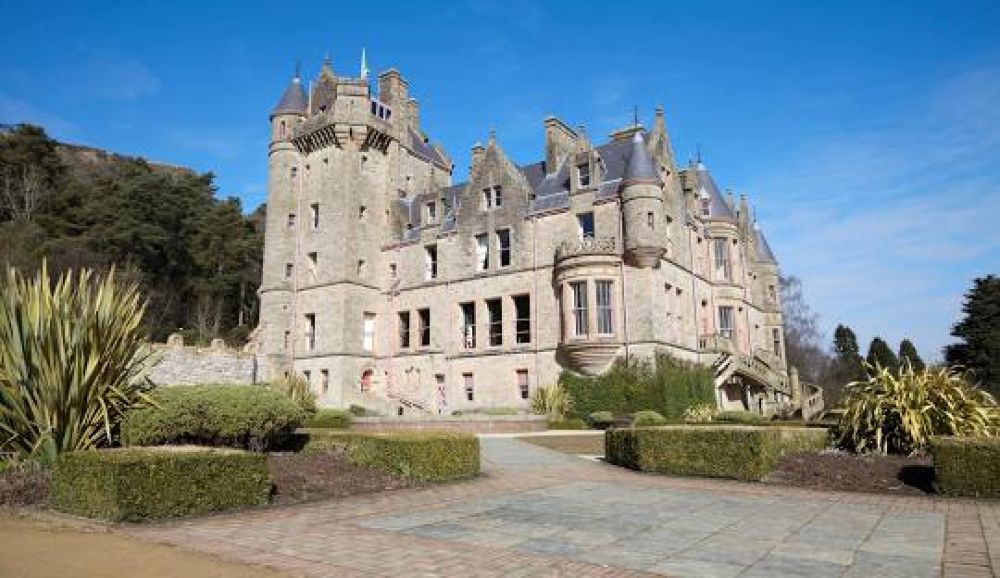

Belfast Castle, located in the capital city of Northern Ireland, is nestled on the slopes of Cavehill Country Park, offering stunning views over Belfast and the surrounding area. The original castle, built in the late 12th century by the Normans, was located in the city center, but the current Belfast Castle, a Scottish baronial style mansion, was completed in 1870 and is the one tourists visit today. The castle has played a pivotal role in the economic and cultural life of Belfast, including its tourism sector.
The first Belfast Castle, built by the Normans in the 12th century, served as a practical fortification and was essential in establishing control of the area. However, it burned down in 1708, leading to the construction of the new castle much later in a more rural location.
The current Belfast Castle was built by the 3rd Marquis of Donegall. After his death, it was passed on to his descendants, the Shaftesbury family. In 1934, the 9th Earl of Shaftesbury presented the castle to the City of Belfast, a gesture that greatly influenced its role as a tourism destination.
Belfast Castle officially opened to the public in 1988. Since then, it has been a focal point for cultural events, weddings, and other celebrations. Its location in Cavehill Country Park makes it a perfect starting point for hikes and picnics, offering outdoor enthusiasts plenty to enjoy.
Throughout the years, extensive efforts have been made to preserve the castle's architecture and heritage. This commitment to conservation has made it a must-see destination for those interested in history, architecture, and natural beauty.
In recent years, Belfast Castle has adapted to new tourism trends. With the increased interest in sustainable tourism, the castle has placed an emphasis on preserving its natural surroundings and promoting green practices. Furthermore, experience-based travel has become more popular, and Belfast Castle has grown as a venue for unique events, such as medieval banquets and storytelling sessions that immerse visitors in Northern Ireland's rich history.
To enhance the visitor experience, the castle has implemented modern amenities, including an antique shop, a visitor's center, and the Cellar Restaurant, which offer insights into local cuisine and culture. The adventure playground and the accompanying educational activities have made the castle more family-friendly, increasing its appeal to a broader audience.
With the rise of digital technology in tourism, Belfast Castle has also created an online presence, offering virtual tours and interactive galleries which provide access to international visitors who might not be able to travel to Belfast.
Belfast Castle is a historic landmark that has successfully transitioned into a modern tourist attraction, by balancing conservation with contemporary tourism trends. It continues to attract visitors from around the world, contributing to the vibrancy and diversity of Belfast's tourism industry.